The product was provided to me free of charge for the review purpose in exchange for my honest opinion. The review was originally posted on my blog, and now I would like to share it with my readers on head-fi.
Manufacturer website: Cowon.
Intro.
After reviewing Plenue M2, Plenue 2, Plenue R, Plenue 2 mk2, and now Plenue L, one would think that by now I should be able to figure out the logic behind Plenue DAPs naming. While numbers make sense, I still don't know what these individual letters refer to. But there is one thing I’m certain about – Cowon is not chasing after the latest trends and instead focusing more on the sound performance as their top priority. The company has been in business since 1995, and to reach this level of longevity, especially in today’s competitive market, they chose to stand out from the crowd by perfecting the formula of the original Plenue release.
Plenue 1 was introduced back in January of 2015, and now 4 years later we have the latest incarnation of that original flagship, Plenue L. It’s hard to believe that throughout all these years Cowon continued to use Cortex A9, 1.2GHz dual-core CPU, 3.7" AMOLED Touch display with 480x800 resolution, JetEffect 7, nearly the same GUI, and the same Linux based OS. The core of the Plenue design (in 1/2/2 mk2, M/M2, S, and L) hasn’t changed, but the rest got upgraded and enhanced with internal storage reaching 256GB, using the latest AKM and ESS DACs and SoundPlus high performance TI amps, and implementation of balanced outputs.
What surprised me the most was the subtle evolution of Plenue 2 into Plenue 2 mk2 followed by an unexpected step forward with Plenue L, which in my book could be called Plenue 3. So, let's proceed to my review of the latest flagship from Cowon and find out more about what this Plenue L (PL) brings to the table.





Unboxing and Accessories.
The unboxing experience of PL is very straight forward with an all black formal-dressed box which looks and opens like a jewelry case and arrived with a traditional silver ribbon around it. The back of the box has a detailed spec in silver, though print is very small and not easy to read. When you lift the cover up, PL is in a secure form fitted cutout which can be lifted like a tray to find a leather case and accessories underneath of it.


Cowon doesn't spoil us with a lot of accessories, but the included one are usually top quality. The micro-USB cable, used for charging, data transfer, and usb dac connection is very durable. Quick guide and warranty card look neat. I also received as a bonus a film screen protector, but I know it's optional and probably can be purchased from Cowon separately.


My favorite accessory here is the leather case. Plenue own leather cases are always of a high quality, optional with lower end models and included with higher end. I loved the original P2 leather case, with the only complaint of covered buttons being not easy to feel. In P2 mk2 Cowon stepped it up with a custom Dignis leather case which used a genuine Italian Minerva leather. PL comes with the same case, just slightly modified to fit the updated shape of the chassis. This Dignis case is made of red leather, complementing PL chassis color nicely, though from my P2 mk2 experience after some time the corners of the red leather turn darker.
The case has an open top where the DAP slides in, and a generous opening for micro-usb and HO ports at the bottom. uSD card can’t be accessed unless you take the DAP out. There is also a cutout window underneath the wheels to reveal LED lights under the knobs. On the left side, power button has a round imprinted shape with a symbol that is easy to feel. Playback buttons are squared, with Play/Pause in the middle that sticks out more, making it easier to ID when sliding your finger. On the back there is a cutout with a recessed metal right-angle insert, creating a 3D effect pattern.
I love this case but wish it would have been in a different color, not identical to P2 mk2.






Design.
PL looks very similar to P2 and mk2 and still feels very solid and comfortable in my hand, has a sturdy brass gold micro-polish alloy metal chassis, carbon fiber glass back panel, and a front touch screen with an assignable home button at the bottom (like in other Plenue models). The footprint of the DAP is very compact, measuring 67.9mm x 119.1mm x 16.5mm and only 199g in weight. It's identical in width and thickness to P2/mk2, only a few mm taller. The only drawback here, due to headphone jack at the bottom, if you use headphones with a straight connector plug and like to keep your DAP in the pocket, PL should be placed with knobs facing down, making volume adjustment not as comfortable in your pocket. If you have right angle cable connector or L-shaped adapter, you can place PL in your pocket with knobs facing up. Most of my cables are 2.5mm terminated with a straight connector, and I use L-shaped 4.4mm short adopter which works out perfect in my case.


On the left side at the top you will find a power button and underneath - hardware transport buttons (Play/Pause in the middle and Next/Prev above and below it) – all round metal buttons with a nice tactile response when you press them. Also, on the left side at the bottom you have microSD slot which Cowon conservatively mentions as 256GB card, but the latest higher capacity cards usually work fine, and of course you get 256GB of internal storage. At the bottom, you have micro-USB connector for charging, data transfer, and USB DAC connection, 4.4mm balanced and 3.5mm unbalanced (combined with optical digital out) HO ports. At the top in the upper right corner you have 2 identical wheel knobs with a soft click action as you turn it. While some other manufacturers implement a bar guard over the top or around the sides of their volume wheel, here Cowon used a different approach with kind of a bridge bar guard protecting only the bottom part of the wheels. If you look closer, these wheel knobs resemble a brass wind instrument buttons, the actual inspiration behind PL design.
Around the base of the wheels under the guard, you have LEDs surrounding the volume wheel and the multi-function wheel. Both LEDs could be disabled, but when enabled you either see a white led pulsating when screen is off or white/red LEDs lit up when corresponding wheel is being turned. Also, red LED lit up during charging. While these wheels were a bit loose in P2/mk2 designs allowing to operate them with one finger, in PL they’re tighter and require two fingers to turn them.








Under the hood.
While P2/mk2 design used AKM AK4497EQ DAC, in PL Cowon made another leap forward with a desktop grade top of the line ESS ES9038Pro DAC. Also, like in other Plenue DAPs, you have a low jitter dual clock precision TXCO oscillator. And in the heart of the DAP you still have ARM Cortex A9 1.2GHz dual-core processor since we are not running a demanding environment requiring a lot of processing power. But you still have plenty of power to easily decode and process any lossless or lossy audio formats, such as DXD, DSD (DFF, DSF), FLAC, WAV, AIFF, ALAC, APE, MP3, WMA, OGG, WV, and DCF. Also, it finally supports DSD256, while P2/mk2 was only up to DSD128.
Display is the same 3.7" AMOLED touch screen with a basic 480x800 resolution and deep rich colors. As I mentioned before, PL has 256GB of built-in memory and microSD card expansion. In addition to 3.5mm single ended HO which doubles as optical digital output, PL also has 4.4mm balanced HO, a welcome step up from previous 2.5mm BAL (in P2). Per spec, SE 3.5mm port is rated at 2.1Vrms with output impedance of 0.9ohm and balanced port boosts the output to 4.05Vrms with output impedance of 1.8ohm. Based on the rough calculation, balanced output of PL can drive over 500mW into 32ohm load. Also, I'm glad the output impedance went down in comparison to P2 mk2 model.
The rechargeable battery is the same 3,050 mAh Li-Po @ 3.7V which you can charge in under 4hrs using 5V/2A charger. In my testing with occasional screen on while playing a mix of mp3 and FLAC files, I was getting closer to 9hrs of battery life, as it was advertised by manufacturer. Of course, as expected, when you play hi-res DSD files which requires more processing due to native decoding, the battery life will decrease. While this is a typical average battery performance which is OK for AK4497EQ DC, it's very impressive for PL considering it uses a more power hungry ES9038Pro desktop grade DAC.
As I mentioned already in my P2 and P2 mk2 reviews, I like being able to use the wheel to adjust the volume, and as you start turning it, the touch screen also gives you an option to swipe volume up/down. With multi-function wheel, it’s a great idea to be able to assign different functions, but the only one that makes sense to me is when using it as a 2nd volume control knob which has a coarse tuning – faster volume change using 2 steps at a time vs regular volume wheel being one step at a time. There are other functions you can assign to this wheel, like for example DAC filter roll-off, JefEffect selection, PREV/NEXT, REW/FF, and Brightness, but I found those to be less practical.

GUI.
If you owned any of the Plenue DAPs in the last 4 years, there is zero learning curve once you turn PL on. It's one of the advantages of the closed OS where you can keep consistency in interface between different models and put more focus into the actual sound tuning and exterior design. Of course, there will be some variations driven by features of a newly introduced DAC or some other enhancements, but everything is easy to figure out and very intuitive even for those who are not familiar with Plenue DAPs.
With a few words about the display, I know some might find 480x800 resolution to be not the greatest, but for displaying artwork and other elements of the GUI it was more than enough. It’s not the highest resolution but, for example, the analog needle of level meter display wasn’t choppy and looked very convincing. The AMOLED display is crisp with nice vibrant deep colors. I personally never put too much emphasis into the display quality unless I’m planning to watch videos, movies, or play games, but even for a basic operation a lag in touch screen response can ruin the experience. Here, the touch screen response was on a level close to my smartphone.
When you turn the power on with a start up time depending on the database update, the DAP goes into the main playback screen where you will find a clear layout with a very efficient interface. Starting with notification bar, upper left corner will show you icons corresponding to playback modes and selected dsp effects, in the middle there will be a current time, and upper right corner will have a volume level, gain setting (IEM – low, headphone – high), "B" indicator when balanced HO is connected, and a battery indicator, though I wish it would show a numerical value of the remaining capacity.
Right below notification bar there is an icon which takes you to Music Selection screen. In there you can navigate up to the top level to select between Folders, Favorites, list of All songs, sort by Artist, Album, Genre, Playlist, and New. Under each selection, you have another icon which brings up either Add to favorites (a song or a folder) or Search using a touch-keyboard with a full alphanumeric search. Next to Music Selection screen icon, you have the area for artist and song name with a scrolling text. To the right is Playback Setting icon which I will talk about separately. I know, it sounds like a lot, but everything is very intuitive and easy to figure out without a need for a manual.
The main screen with an album artwork occupies upper half of the screen, and if there is available lyrics, you will notice a corresponding icon in the upper right corner. Clicking on the album/song art will zoom in to provide you with a more detailed info view about the song format, and while scrolling down from there you will see all the corresponding tags. Underneath the album/song art, you have quick shortcut icons to enable/disable Looping, enable/disable Shuffling, and a choice to play a Single track or tracks from a current Folder or to play All tracks. Below it is a playback control Play/Pause and Next/Prev touch buttons to skip or forward through the track. Also, you have a playback bar to fast forward/back through the track to a desired point by swiping through it, and this scroll bar will be either below or above playback buttons depending on the selected skin. All the way at the bottom, you have L/R channel level meter in either analog needle dial or digital bar displays.



There are quite a few customization options to change the skin of the GUI where you can switch between analog or digital level meter, including turning it off, as well as 6 different skins which affect the layout and graphics of the touch controls. Going back to Playback Setting you will find a plethora of other shortcut options, such as Setting, Adding current track to favorites, selecting JetEffect DSP effects, Replay a selection of the track (lets you select start/stop marker), Activate auto rotation (normal view in a portrait mode, tile view in a landscape mode), select Headphone mode On (high gain) or Off (low gain), Remove silence (gapless), set the track skip interval, set Rewind/FFWD speed, Select a skin and a level meter, show time elapsed or remaining, and load the background image used in the menus.
In Setting you have access to select a specific JetEffect preset or to modify your own user preset, Music setting with many options already described in the shortcut Setting menu above. The only addition here is a DAC filter roll-off where you have a choice of Fast (min), Slow (min), Fast (linear), Slow (linear), Apodizing, Hybrid, and Brickwall. Display setting has a selection of Language, Brightness, and User Presets (from 4 to 16), and option to show the song change. Timer for a sleep timer, auto off, auto display off, and to set the actual time in notification bar. AI Audio with AI volume, JetEffect, shuffle, and shuffle options. System setting with selection of Hearing Protection (volume limiter which can be enabled/disabled now), multi-function button assignment (music play screen, browser, settings, or volume), button lock, lock screen (on/off), Multi wheel, L/R Balance, LED (on/off), USB mode (MSC or MSC/DAC), usb DAC power (from PC/smartphone or internal battery), database update, loading defaults, formatting internal memory, and Info. As I mentioned already, there are 6 functions you can assign to multi-wheel, but the only one that made sense to me was Volume (at double step adjustment).








AI Audio was already introduced in P2 mk2 update, and here are more details about it:
AI Volume – enabling this feature makes the volume between the tracks remain at the same level. Some might have noticed that different audio tracks have variation in loudness, and this AI Volume feature normalizes the levels. But it doesn't normalize the tracks by compressing them, like it's done in WM1Z which I personally don’t like. Instead, it’s done in a very transparent way without ruining the dynamics.
AI JetEffect – enabling this feature randomizes JetEffect presets, which I think is done based on the ID tag of the song genre. I wasn’t too crazy about this feature since JetEffect can really alter the sound, while I prefer to be in control of this setting. It’s a fun feature, but if you decide to enable it, make sure to select AI Volume as well because some of the JetEffect presets can really change the volume. When both AI Volume and AI JetEffect are enabled, volume variation is down to a minimum.
AI Shuffle – I’m still trying to figure out how it differs from a regular shuffle, when enabled. It does come with additional settings, where you have Shuffle by Preference (normal, high, and reverse) and Shuffle by Time (normal and high). In my opinion, AI Shuffle is just an enhanced version of a regular Shuffle Play where you have additional controls, such as Preference and Time.

In my opinion, JetEffect 7 DSP effects is the crown jewel of Plenue DAPs. You get a total of 66 presets with 50 pre-defined ones and 16 user-defined. Furthermore, you have access to 10 Band semi-Parametric EQ where each band has 3 selectable values: 63/76/92, 112/135/164, 200/240/290, 350/430/520, 620/750/910, 1.1k/1.3k/1.6k, 2k/2.4k/2.9k, 3.5k/4.2k/5.1k, 6.2k/7.5k/9k, 10.9k/13.2k/16k. You can adjust every band by +/- 12 steps and select bandwidth (Q) of each frequency as normal, wide, or narrow – turning this EQ into semi-Parametric EQ.
Next you have BBE+ effects with BBE exciter/enhancer in 10step adjustment, Mach3Bass 10step bass adjustment, 3D Surround 10step adjustment, and MP on/off harmonic-compression restoration effect. There is also Chorus effect which you adjust in 10steps and can select between 3 chorus, 2 unison, and 3 flange types, and Reverb effect adjustable in 10steps where you can select Chamber, Room, Club, Hall, Auditorium, Cathedral, Stadium, Canyon, or Long reverb types.
JetEffect DSP effects of Plenue DAPs is a great tool if you like to tweak the sound, if you want to fine tune the performance, and if you need a powerful EQ tool.




Sound Analysis.
In this test I was using PL with 64 Audio U18t and Campfire Audio Solaris (both balanced) while playing the selection of my favorite test tracks, such as Agnes Obel “The curse”, Sandro Cavazza “So much better” (Avicii remix), C-Bool “Never go away”, Ed Sheeran “Shape of you”, Galantis “Hunter”, Iggy Azalea “Black widow”, Indila “Boite en argent”, Robin Schultz “Oh child”, David Elias “Vision of her”, and Michael Jackson “Dirty Diana” to analyze the sound of this DAP.
I did compare the sound out of the box and 100hrs later after standalone burn-in, and was surprised to find a noticeable difference, perhaps due to capacitors burn in? Out of the box the tonality of PL was nearly identical to P2 mk2 which puzzled me at first. After the burn in, I hear PL to have a tighter, better controlled, more articulate, layered bass with a deeper extension and noticeably more textured rumble. Also, the lower treble became a little smoother, more natural. I made these observations while comparing to P2 mk2.
The signature of PL is still closer to neutral with a more revealing natural tonality and excellent retrieval of details, reaching micro-detail level. The sound is very layered with an impressive separation, especially from balanced output. The same with vertical expansion of dynamics which I expected to stand out once I read 128dB Signal-to-Noise ratio spec.
Soundstage expansion is very spacious in every direction with a precise imaging of instruments and vocals placement. Of course, this is all based on how I hear it with selected pairs of IEMs I used for testing but considering that I have tested dozens of sources - I can draw a conclusion that PL lets the soundstage of any earphone/headphone open to their full potential.
Another thing that stands out with PL is its nearly pitch-black background with zero hissing even with sensitive IEMs like Andromeda and Solaris. Even from a high-power Balanced output, there was hardly any hissing when I'm idling the playback or dropping the volume down to zero during the playback. With such quiet black background, the transient response of note on/off is very fast, making the details pop up with more clarity and cleaner edge.
I already mentioned significance and superior quality of the Balanced output in PL a few times, and there is a good reason for that. Besides a difference in output power, Single Ended requires about 7-8 more volume clicks to match Balanced output, there is a noticeable difference between their sound performance. BAL output soundstage is wider, and it's quite noticeable. Also, BAL output has blacker background, making its sound tighter and with faster on/off note transient. In contrast, I find SE output to be a little less resolving and with an overall warmer tonality.
Also, I was quite impressed with DSD playback performance of BAL output, something I rarely test since I have only a handful of DSD high res tracks. With PL, while testing DSD64/128/256 files, in comparison to LPGT, SPK SS, and DX200Ti (w/amp8), the sound has the most holographic soundstage expansion with the best vertical dynamics I heard out of these 4 flagship DAPs.
Digital Filters:
As it was mentioned already, ES9038Pro DAC offers a selection of 7 digital filters: Fast (mix), Slow (min), Fast (linear), Slow (linear), Apodizing, Hybrid, and Brickwall. These digital filters do affect the bass performance, almost like there is a band-pass filter around sub-/mid-bass since upper mids/treble weren't affected, though the effect is subtle. Here is what I hear:
- Fast (min) -> Slow (min): slow has a subtle effect of a slight sub-bass attenuation, giving more power to the mid-bass punch.
- Fast (min) -> Fast (linear): linear adds a little bit of rumble in the sub-bass, it's a subtle effect.
- Fast (linear) -> Slow (linear): similar effect to when comparing fast/slow "min".
- Fast (min) -> Apodizing: apodizing rolls off deep sub-bass rumble, making bass a little leaner and a touch faster. This effect is a little more noticeable than fast->slow.
- Fast (min) -> Hybrid: I hear a little more sub-bass rumble, but also the attack/speed of the mid-bass is a bit slower; this effect is more audible when focusing on kick drums.
- Fast (min) -> Brickwall: I hear a little more punch in the mid-bass, this effect reminds in of the brickwall compressor with a focus on low end, trying to help the kick drum cut better through the mix.

Pair up.
In my pair up test I had PL set in high (headphone) gain and noted either BAL or SE connection and volume level in every case.
64 Audio U18t (BAL, V49) - wide soundstage expansion, more balanced signature, revealing natural tonality, especially in mids (vocals), good low end extension, nice airy treble with a controlled sparkle.
64 Audio Fourte (BAL, V49) - wide soundstage expansion, more v-shaped signature, deep visceral bass, lean lower mids, revealing upper mids, sparkly bright treble (not harsh) with a nice definition. Due to elevated bass and extra sparkle, mids perception pushed a little back.
64 Audio U12t (SE, V70) - wide soundstage expansion, more balanced signature with mids pushing a little forward, bass being closer to neutral, though with a nice extension, mids being neutral and natural, still with a good retrieval of details, treble having a nice airy extension with a well-defined sparkle. Good pair up, though the sound was a bit raw.
iBasso IT01s (BAL, V45) - wide soundstage expansion, nicely balanced signature with a deep low-end rumble, natural revealing mids with great retrieval of details and slightly out of your head presentation, good airy treble extension with a well control crisp sparkle.
Noble K10UA (SE, V58) - wide soundstage expansion, nicely balanced signature with a very good low-end extension and a nice mid-bass punch, more natural revealing mids which are slightly pulled back, and a crisp revealing well controlled non-harsh treble.
Westone W80 (SE, V54) - wide holographic soundstage, nicely balanced W-shaped signature with deep laidback bass, fuller body natural mids (slightly pulled back in quantity and with more out of your head presentation), and airy treble with a well-controlled sparkle.
Sennheiser IE800S (BAL, V61) - wide soundstage with further out of your head depth expansion, slightly v-shaped signature with a deep sub-bass rumble and a nice mid-bass punch, more neutral lower mids, natural detailed upper mids, and crisp airy treble. Bass is more noticeable here, almost between the v-shaped and slightly L-shaped signature.
Empire Ears Legend X (BAL, V57) - wide soundstage expansion, pure L-shaped signature with deep bass that goes low with a resonating sub-bass rumble and hard-hitting mid-bass punch, neutral natural detailed mids, and well controlled treble sparkle. This is probably the most bass I heard from LX out of any pair up, and while the bass is clearly dominating here, it's still well controlled.
Campfire Audio Andromeda (BAL, V35) - wide soundstage expansion, a balanced signature with a more forward mids presentation, deep rumble, laid back mid-bass, more neutral lower mids and brighter more revealing upper mids, and crisp airy non-fatigue treble.
Campfire Audio Solaris (BAL, V31) - wide soundstage expansion, very nicely balanced sound signature with a natural revealing tonality, deep sub-bass rumble, fast mid-bass punch, natural revealing mids, crisp airy non-fatigue treble extension. Great pair up.

VE ZEN ZOE (BAL, V80, 320 ohm) - wide soundstage expansion, nicely balanced signature with a laidback organic natural tonality. Deep warm laidback bass, full body smooth natural mids, very well controlled treble definition. Quite detailed for a laidback smooth sound.
Oppo PM3 (BAL, V80, Planar magnetic) - wide soundstage expansion, smooth balanced signature with a very good retrieval of details. To my surprise, here bass goes deep and hits harder than usual, very well controlled without any spillage into lower mids (very rare for PM3 pair ups). Mids have full body and sound very natural with a little brighter more revealing upper mids, and a moderate treble with a good definition. This pair up was quite unique for PM3.
Audeze EL8C (SE, V100, Planar magnetic) - wide soundstage expansion, noticeably mid-forward signature, though there is a nice sub-bass extension and fast mid-bass punch, just that the quantity of low end is closer to neutral level. Lower mids are lean, upper mids are brighter, more analytical and treble is very crisp. I do hear a little bit of metallic sheen in this pair up. This wasn't my favorite pair up with EL8C since tonality was too thin and revealing for my taste.
Audio-Technica ATH-R70x (SE, V106, 470ohm open back) - wide holographic soundstage, nicely balanced signature with a natural revealing tonality. Unlike other pair ups, here the sub-bass rumble goes deeper, and mids-bass has a nice punch, the bass is very well controlled and nicely layered. Mids are natural, smooth, revealing, excellent retrieval of details, and treble is airy, expanded, and a has a nice natural sparkle. In this pair up, bass comes out and shines and so does excellent retrieval of details in mids.
Beyerdynamic T5p2 (BAL, V66, Full size Tesla) - wide soundstage expansion, nicely balanced signature with a natural revealing tonality. Deep sub-bass rumble with a punchy mid-bass, more neutral lower mids and natural revealing upper mids, along with a crisp airy well controlled treble. I do hear in this pair up mids being slightly pulled back, but it's done in a tasteful way, giving a little more power to the bass and crisper definition to treble.
Previous Plenue DAPs had a satisfying pair up with IEMs, but not with full size more demanding cans. PL breaks that mold with some great full size pair up surprises.

Comparison.
Here I tested and compared PL vs other DAPs, volume matched in each comparison using U18t (w/Leo II cable) and Andromeda (w/stock cable). Of course, you need to keep in mind that PL lacks Bluetooth (especially duplex receive/transmit BT to stream from smartphone) and the ability to run apps due to no WiFi and app store support. If that's your important requirement, PL is not for you. But if you are into a pure playback and need a flexibility to shape the sound - JetEffect DSP effects and PL's semi-Parametric EQ are among the best.
PL vs theBit Opus#2 - a similar soundstage expansion, with PL being just a little wider. In terms of tonality, PL sounds more natural, smoother, while in comparison #2 is a bit raw and brighter in tonality. Also, PL has a more expanded dynamics with a better layering and separation of sounds. I wouldn't say #2 is congested, but I'm just hearing PL a little better in this technical performance. Also, #2 has a lot more hissing in comparison to nearly dead quiet PL when used with Andro.
PL vs iBasso DX200 w/AMP1 - very similar soundstage expansion, both in width and depth. DX200 with default amp tonality is a little brighter, making its sound more reference while PL sounds a little smoother. In terms of sound signature, PL bass is more neutral while DX200 sub-bass has a little lift in rumble. Technically, they both have a similar sound dynamics expansion and layering/separation of the sounds. Used with Andro, DX200 has more hissing.
PL vs Luxury & Precision L6 - very similar soundstage expansion, both in width and depth. Regarding tonality, due to higher output impedance of L6/BAL out, without iEMatch L6 bass is leaner and tonality is a lot brighter in comparison to a more natural neutral PL. With iEMatch, the signature and the tonality of L6 is a lot closer to PL, except PL treble is a little smoother and more natural in comparison. Technically, they are on the same level with dynamics expansion and layering/separation. With Andro, PL is nearly dead quiet while L6 has a noticeable hissing.
PL vs Astell & Kern SP1000 SS - very similar soundstage expansion, just with PL being a little bit wider. In terms of tonality, SPK is smoother and a little bit warmer in mids, while PL is more neutral and a little more revealing in mids. Both have a similar treble rendering which is more natural and less peaky. Technically, I feel PL has a little better layering/separation where I hear a little more air between the layers, while SPK is smoother and more musical in comparison. With Andro, SKP has a touch more hissing, while PL is nearly dead quiet.
PL vs Sony WM1Z - very similar soundstage expansion, just with PL being a touch wider. In comparison, WM1Z has more sub-bass rumble with a little stronger mid-bass punch and a little more sparkle in treble, while rendering of mids is nearly identical in both DAPs. So, the tonality is rather similar, but the signature change stands out, especially due to stronger bass impact in 1Z. Technically, they are nearly identical when it comes to dynamics expansion and layering/separation of sounds. With Andro, 1Z has a touch more hissing, while PL is nearly dead quiet.
PL vs Lotoo Paw Gold Touch - very similar soundstage expansion, just with LPGT being a touch wider. This comparison has a lot of similarities. While both are neutral and very resolving, I can still spot a difference in a blind test with LPGT being a touch more neutral and slightly wider in soundstage while PL having a little deeper low end, a bit more revealing upper mids, and a touch more sparkle in treble. Technically, they are a good match with a similar dynamics expansion and separation/layers between the sounds (you can hear more air between the layers). Both are also nearly dead quiet with Andro.
PL vs P2 mk2 - Plenue L exterior is very similar to Plenue 2/2mk2. Interface is nearly identical as well. Of course, you get ES9038Pro DAC and a more powerful 4.4mm Balanced output. I hear PL with a more holographic 3D soundstage and improved imaging in comparison to Plenue 2/mk2, also the sound is more dynamic, more layered, especially when playing higher res DSD files. PL has a tighter, better controlled, more articulate, layered bass with a deeper extension (more textured rumble). Also, the lower treble is a little smoother, more natural. Perhaps there is not as big gap in tonality, but in terms of sound performance you can really hear the difference. Plus, with a lot more powerful BAL output, you can easily drive demanding headphones more efficiently in comparison to P2/mk2.

Other connections.
USB DAC.
I'm not a big fan of using a dedicated audio player as USB DAC because I usually look at a DAP as a portable standalone source. If you are not happy with an audio output of your computer, there are plenty of dedicated USB DAC choices. But in some cases, when you are traveling and don’t want to bring multiple pieces of equipment, using DAP as USB DAC has its advantage.
Using PL as USB DAC was very straight forward. Drivers were installed automatically as soon as I connected PL to my Win7 ThinkPad T430s, there was no need to install custom drivers. When connection is detected, you have a choice from the touch screen to either select USB DAC or USB MSC (for a file transfer). Once you select USB DAC, my laptop volume was set to the max and I was able to adjust the volume from PL. The only negative here, DSP effects are disabled when in USB DAC mode.
In terms of the sound quality, playing the same song from laptop while using PL as USB DAC vs playing it directly from PL - there is a noticeable sound difference where the quality is higher playing it from PL directly. Using PL as usb DAC is convenient to enhance your laptop audio output, but for the best audio fidelity I recommend playing audio directly from PL. Also, seems that after you disconnect PL as usb DAC, it automatically powers down since there is no way to turn off DAC mode without rebooting PL.


Optical Out.
PL vs PL + Micro iDSD BL - In this pair up test with iDSD the sound is a little warmer and has a deeper low end impact when compared to listening directly from PL which has a more transparent tonality with a more linear low end response. The rest is similar. It's a great option to be able to use PL as a digital touch screen transport driving external DAC/amp supporting optical input. Also, in this pair up the volume can only be controlled from iDSD.

Line out.
Plenue DAPs don't have a dedicated Line Out port, and instead they suggest setting volume to the max in high gain where the HO acts as LO and there shouldn't be any distortion. I have verified this in the past with previous Plenue DAPs but didn't have interest to try it with PL since I found 3.5mm SE output to be inferior to 4.4mm BAL and I don't have any BAL amps to test it with 4.4mm output.
Conclusion.
While I never had a chance to hear Plenue S, based on every other Plenue DAP I have tested so far, PL is got to be my favorite one to date. I honestly don't know why Cowon chose to call it L and what it even means, but Plenue L clearly follows the design evolution of P2 -> P2 mk2 -> PL with a very similar exterior design which almost calls for this DAP to be P3. But, regardless of what it's called, PL is their new flagship DAP which takes all the previous legacy elements and ups it with an updated audio performance optimized around the latest desktop quality ES9038Pro DAC and high power 4.4mm BAL output.
Cowon philosophy was always focused on sound performance as their highest priority. Even so they did implement a basic Bluetooth functionality in Plenue R model, it seems that Cowon is one of the few companies who doesn't care as much about streaming or app support or even the latest trend of duplex BT to stream from the smartphone. That certainly will play an important role when you're choosing your next flagship DAP. But if high resolution audio playback from a local storage is your top priority, and you are looking for a lightweight, compact portable DAP with a fast customizable interface, top quality audio performance, high power BAL output (low noise and hiss-free), beautiful design, and very powerful JetEffect DSP effects for sound shaping - Plenue L deserves a serious consideration.
I have access to a lot of flagship DAPs, but not all of them are portable enough for everyday use on the go. In the last month Plenue L got a lot of mileage when I’m choosing which DAP I bring with me to work because it's one of the smallest and the lightest flagship players in my review rotation. Unfortunately, other flagships are getting bigger, heavier, less portable, so I’m glad Cowon is in tune with consumers demand, still keeping the portability and the sound quality as their top priorities.
























































































































































































































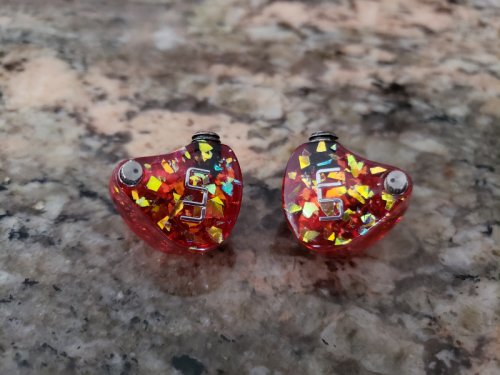

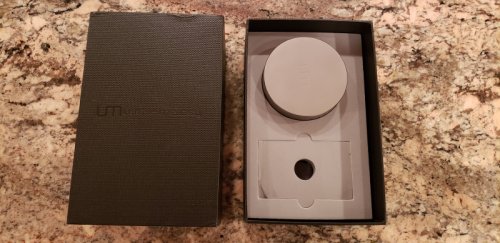
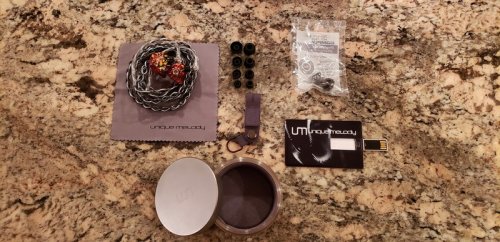

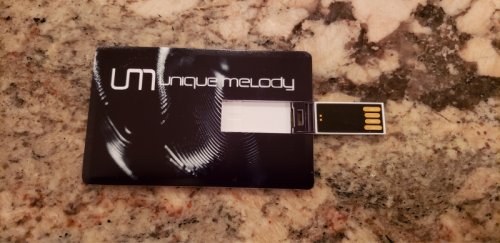

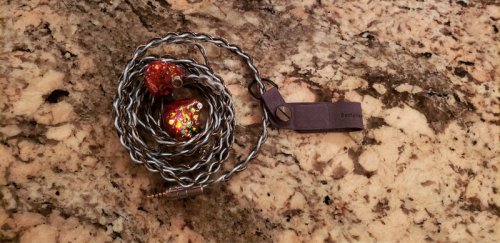



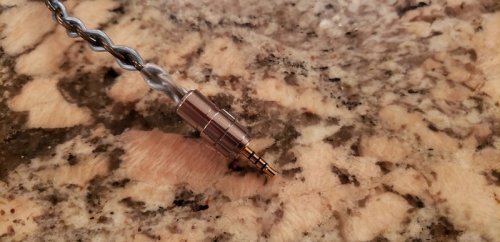












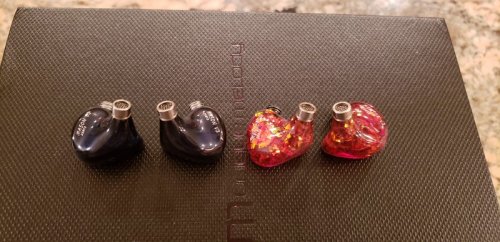

















































































































































































































































































































































































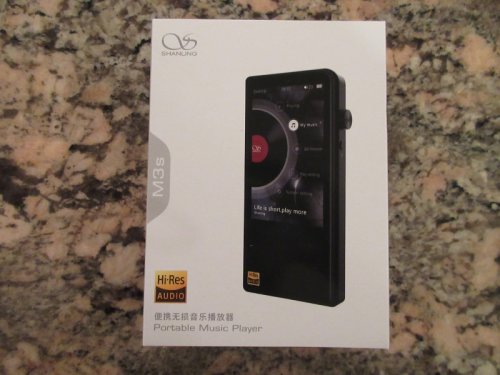







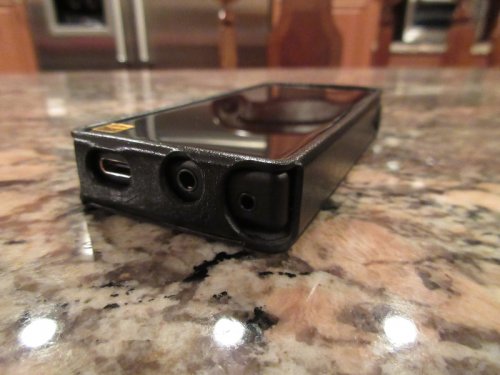


















































































































































Thanks for the detailed feedback. I enjoyed the review.